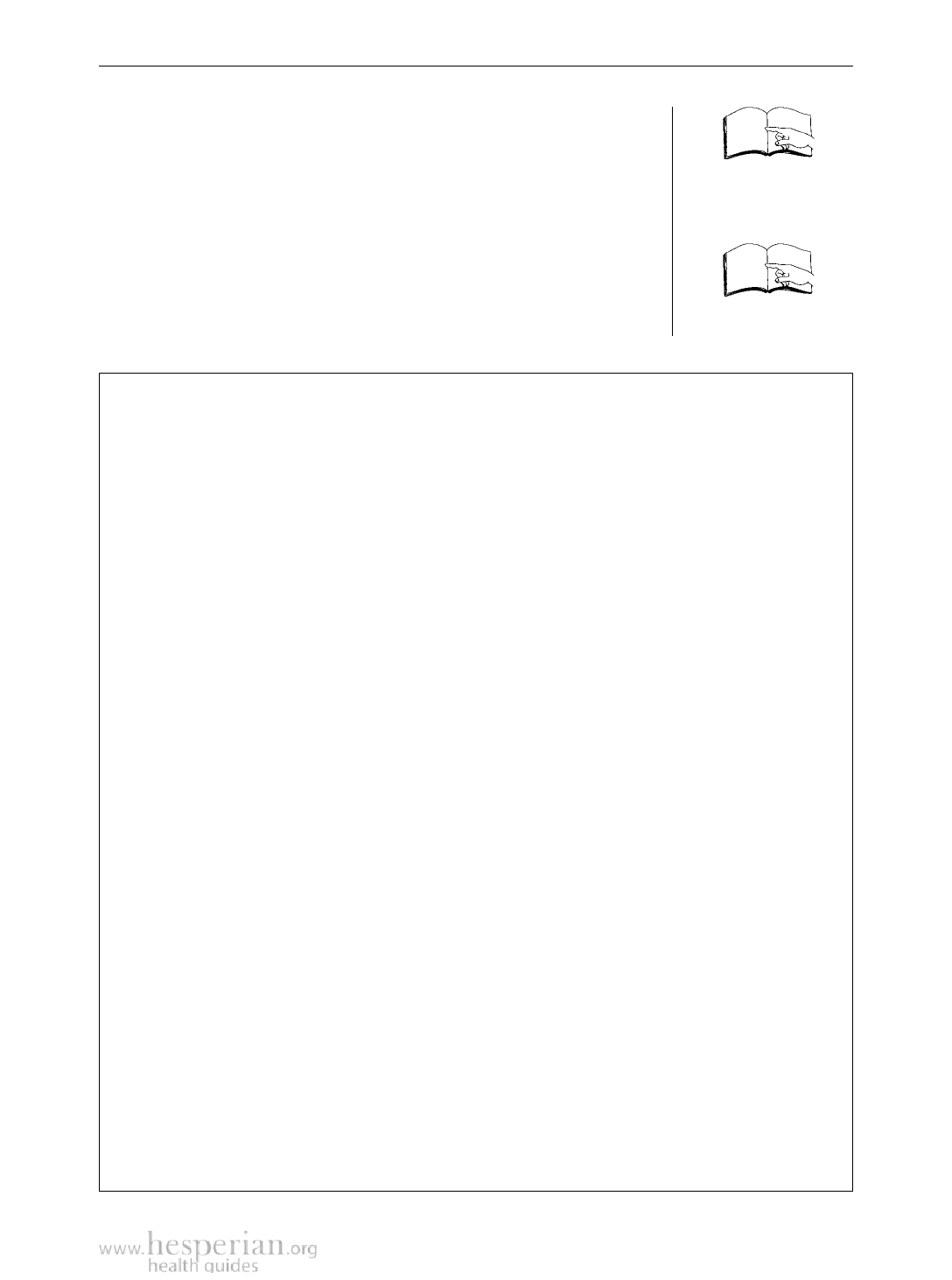
Pregnancy, Childbir th, and Breastfeeding 293
Childbirth
Most mother-to-child transmission of HIV happens during
childbirth. Using ARVs before and after birth can help protect
the mother and the baby. The transmission risk is greatest when
waters have been broken for more than 4 hours before birth,
with tearing of the birth canal, and where the baby has more
contact with blood and vaginal fluids than usual during birth.
Infections after birth can be more dangerous if you have HIV.
Get treated immediately.
520
preventing
mother-to-child
transmission
97
infection after
childbirth
Breastfeeding
HIV infection can be passed to the baby in breast milk.The risk is greater if the
mother is newly infected, or is very sick with AIDS. Some ways that mothers with
HIV can reduce the risk of infecting their babies are:
• Take ART, for your own health or only while breastfeeding (see page 520).
• Give nothing but breast milk—not even water—until the baby is 6 months old.
• Prevent breast and nipple infections, and cracked or bleeding nipples (see
page 115). See a health worker right away if you have any signs.
• Treat for thrush if you see white spots or sores in your baby’s mouth (see
page 117).
• Only give replacement feeding, such as formula, if you will be able to do it safely
for the whole time the baby needs it (see below).
In many places the risk of diarrhea and malnutrition from other liquids and unclean
water is much greater than the risk of HIV, especially in the baby’s first 6 months.
For these reasons, giving only breast milk for the first 6 months is usually the safest
choice for the baby of a woman with HIV. After 6 months, add complementary
foods, and then wean the baby at 12 months, if you can meet the baby’s nutritional
needs (see page 110). It can take 3 days to 3 weeks to wean a baby.
Deciding whether to breastfeed
A health worker trained in infant feeding and PMTCT can help you consider :
• Do children in your area often get sick or die from infections, diarrhea, or poor
nutrition? If the answer is yes, then breastfeeding may be best.
• Do you have access to ART treatment? This makes breastfeeding safer for a
woman with HIV.
• Are clean, nutritious milks or formula available to replace breast milk? You will
need supplies for 6 to 12 months, which is very costly. You will also need clean,
boiled water, containers for mixing, and must learn how to feed with a cup (see
page 119). Animal milks do not have all the nutrition babies need, and should be
a last choice.You will need to add vitamins, sugar, and clean water. Ask a health
worker for the recipe for the kind of milk you will use.
Where Women Have No Doctor 2012